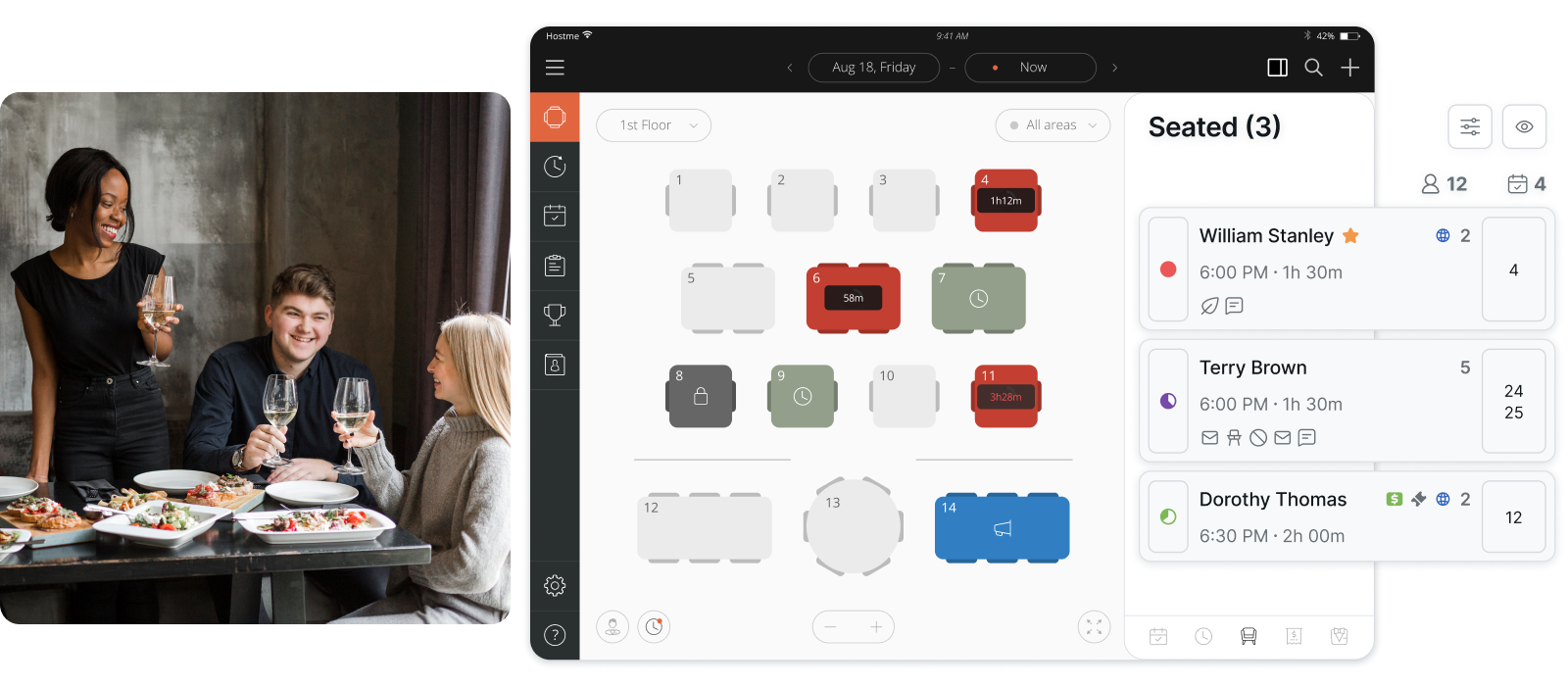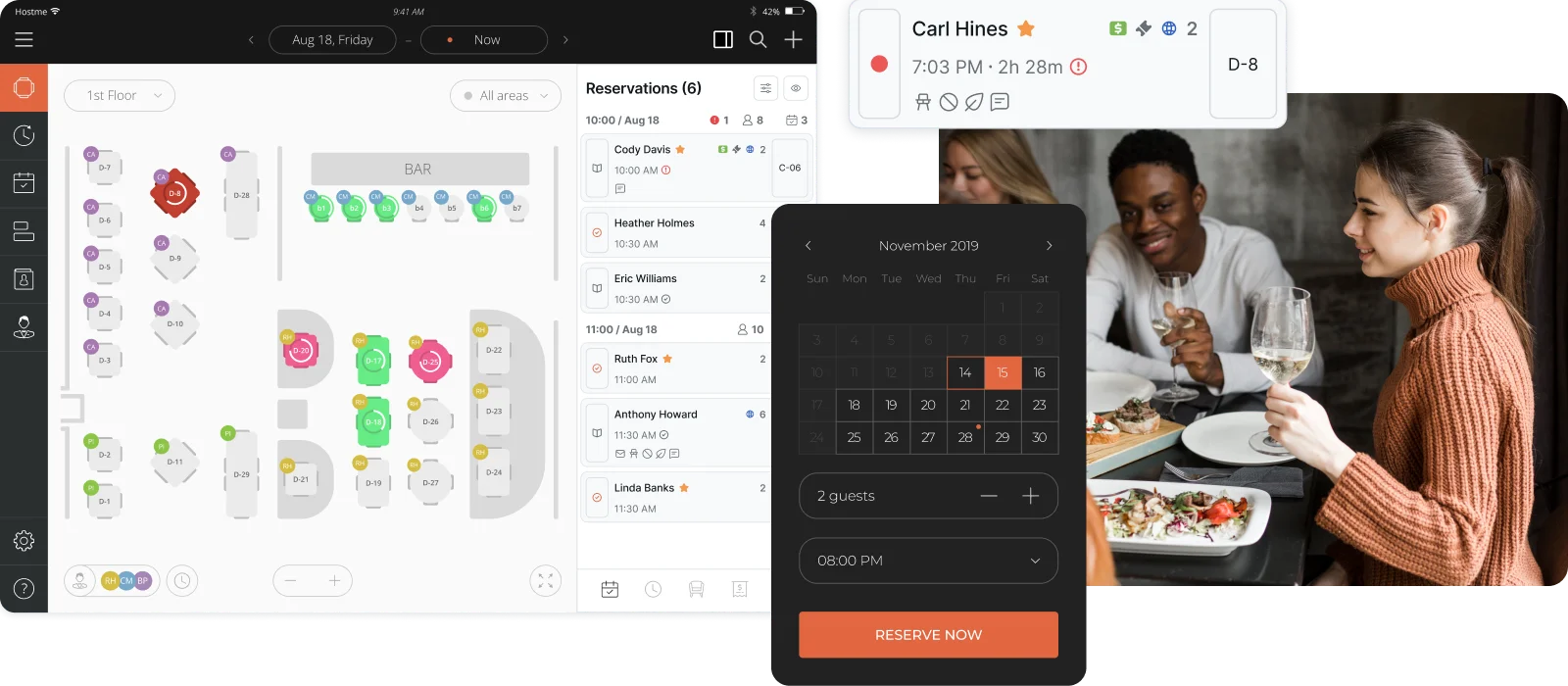Tools and Technologies for Reducing Waiting Time in Restaurants
For restaurant owners and general managers, few things are as frustrating—or costly—as long wait times. Whether it’s a packed dining room with guests milling about the entrance or a digital waitlist that keeps growing, delays can negatively impact the guest experience and your bottom line. Fortunately, there are smart, strategic ways to reduce waiting time in restaurants without sacrificing service quality or guest satisfaction.
This article explores why wait times matter, what causes them, and how to leverage modern tools, optimized processes, and team training to run a more efficient operation.
Why Reducing Waiting Time in Restaurants Matters for Guest Satisfaction
Guests today expect more than just great food—they expect convenience, speed, and comfort. When diners face long waits to be seated, to order, or to receive their meals, they’re more likely to:
- Walk away before they’re seated
- Leave negative reviews
- Order less and rush through their meals
- Choose not to return
A recent study by QSR Magazine found that 70% of guests say wait time significantly influences their perception of service quality, regardless of how good the food is. In contrast, reducing waiting time in restaurants has been shown to:
- Improve online ratings and word-of-mouth referrals
- Increase table turnover and daily revenue
- Reduce staff stress and burnout
- Create a more welcoming and organized dining atmosphere
In short, shorter wait times equal happier guests—and more successful restaurants.
Identifying the Root Causes of Long Wait Times
Before implementing solutions, it’s crucial to understand what’s contributing to the delays. Common causes of excessive wait times include:
- Overbooking or mismanaged reservations
- Walk-in surges during peak hours
- Inefficient host stand operations
- Slow table turnover
- Kitchen bottlenecks or understaffing
- Poor guest communication
Identifying your restaurant’s unique friction points is the first step toward finding effective solutions to reduce waiting time in restaurants.

Tools and Technologies for Reducing Waiting Time in Restaurants
Modern restaurants have access to a wide range of digital tools designed to streamline the guest experience and reduce operational inefficiencies.
Reservation and Queue Management Systems
Platforms like Hostme, Resy, OpenTable, and Yelp Waitlist provide real-time reservation and waitlist management. They help restaurant staff:
- Prevent overbooking
- Manage walk-in and reservation flow
- Send text or app notifications to guests when their table is ready
- Allow guests to join a queue remotely
These tools also reduce congestion at the entrance and give guests more flexibility and freedom during the wait.
Pro Tip: Choose a platform that allows for both reservations and virtual queuing, so you can adapt to the day’s needs.
Table Turnover Optimization
Digital table management systems provide color-coded visual maps that display table status: seated, ready, being cleaned, or available. When integrated with POS systems and servers’ handheld devices, they allow staff to:
- Track dining times
- Notify hosts as soon as a table is cleared
- Ensure tables are cleaned and reset quickly
This data-driven approach can shave precious minutes off each guest’s wait.

Front-of-House Strategies
The front-of-house (FOH) team plays a critical role in shaping the guest experience from the moment they walk in. Smart FOH practices go a long way to reduce waiting time in restaurants.
Host Training & Efficient Communication
The host or hostess is the first line of communication and a key player in managing guest expectations. Training hosts to:
- Greet guests promptly
- Estimate wait times accurately
- Use reservation and waitlist tools effectively
- Communicate delays with empathy and professionalism
...can help avoid confusion and minimize guest frustration.
Pro Tip: Conduct regular FOH role-play sessions to practice handling peak-hour pressure and problem-solving.
Smart Seating and Table Assignment
Poor seating decisions—like assigning large tables to small parties or overloading one server—can create a domino effect of delays. Modern seating tools and thoughtful zoning practices ensure that:
- Guests are seated efficiently and fairly
- Servers are not overwhelmed
- Traffic flow in the dining area remains smooth
Combine host intuition with smart seating software to minimize idle tables and balance workloads.

Kitchen and Back-of-House Improvements
The kitchen is often the biggest source of hidden wait times. Improving back-of-house (BOH) operations can reduce ticket times and support faster table turnover.
Streamlining Menu Items for Faster Prep
A bloated or overly complex menu increases prep time and puts more pressure on kitchen staff. Consider the following:
- Analyze order frequency and remove slow-selling items
- Offer fewer customizations during peak hours
- Design “fast lane” menu options that can be prepped quickly
Streamlining the menu doesn’t mean sacrificing quality—it means optimizing for speed during critical hours.
Optimizing Staff Workflows
Clear BOH workflows ensure that every member of the kitchen team knows their role, station, and priorities. You can:
- Use kitchen display systems (KDS) to digitize orders
- Assign designated expo staff to speed up plating and food running
- Cross-train staff to cover gaps during rushes
Pro Tip: Regularly audit your kitchen flow to find bottlenecks and opportunities for automation or simplification.
Real-Time Communication with Guests
Transparency is one of the most underrated tools to reduce waiting time in restaurants—or at least how it’s perceived. When guests know what to expect, they’re more likely to wait patiently and enjoy their visit.
Best practices include:
- Sending automated updates via SMS (“Your table will be ready in 10 minutes.”)
- Giving realistic time estimates—and beating them
- Providing entertainment or offers during the wait (e.g., “Enjoy a drink at the bar while you wait.”)
Some restaurants go further by offering virtual waiting rooms, allowing guests to browse nearby shops or relax in their car until their table is ready.
Pro Tip: Use the wait time as a branding opportunity—highlight upcoming events, signature dishes, or loyalty rewards.
Final Thoughts on Reducing Waiting Time in Restaurants
Reducing waiting time in restaurants isn’t just about shaving minutes off the clock—it’s about creating a seamless, welcoming experience that keeps guests coming back. By combining the right technologies with well-trained staff and optimized workflows, restaurant owners and general managers can transform their operations.
To recap, the smartest ways to reduce waiting time in restaurants include:
- Leveraging digital reservation and waitlist platforms
- Optimizing table turnover with real-time seating data
- Training hosts for fast, friendly service
- Improving table assignment logic
- Streamlining back-of-house operations
- Using real-time guest communication to manage expectations
As competition in the dining industry continues to grow, eliminating friction in the guest experience gives your restaurant a clear edge. The good news? Every improvement—no matter how small—adds up to shorter waits, happier guests, and stronger results.

by Marylise Fabro
CMO


-p-500.png)









